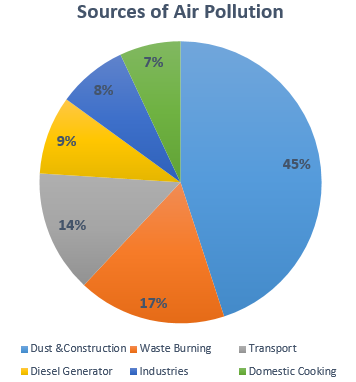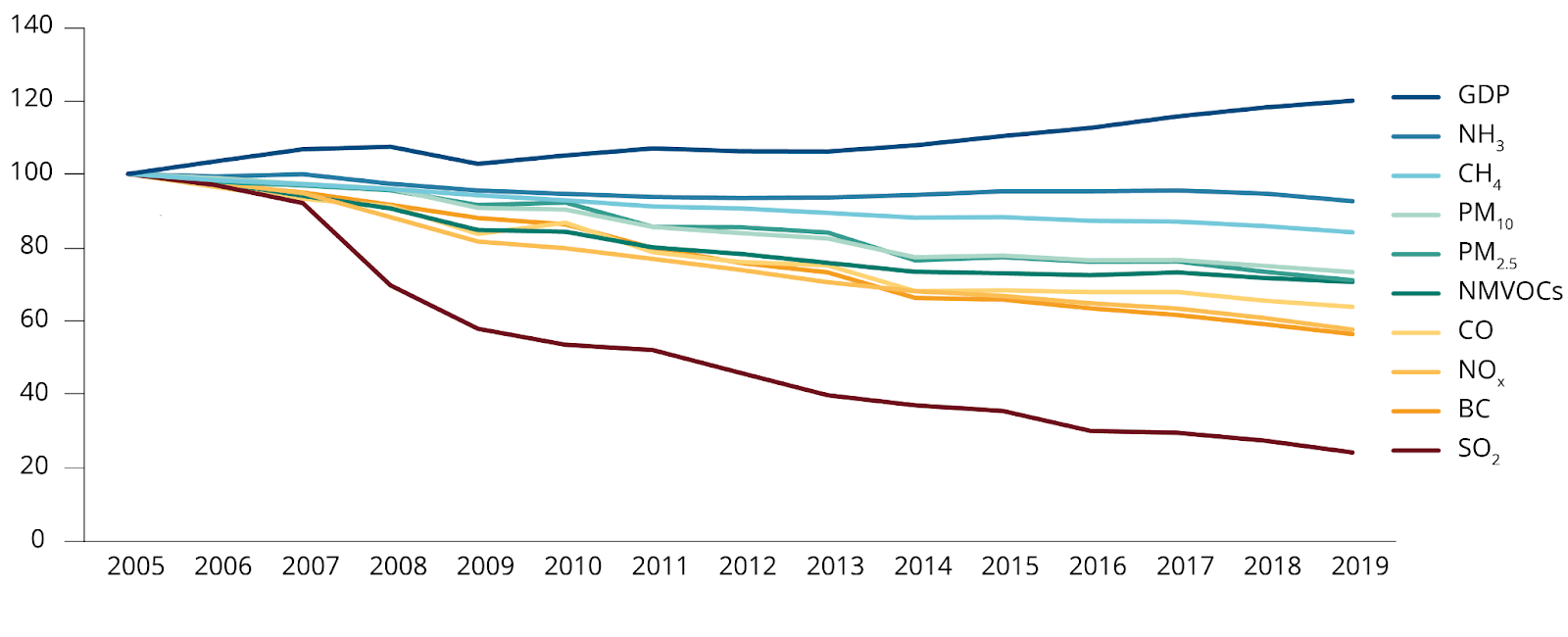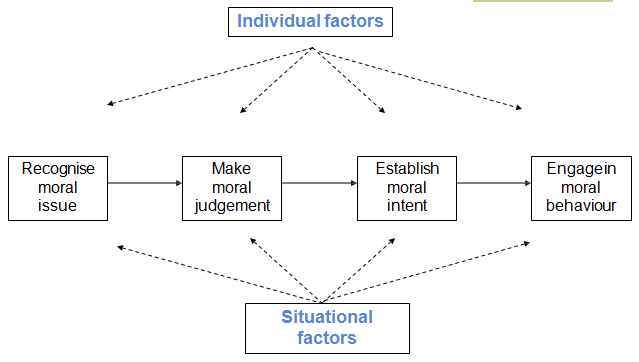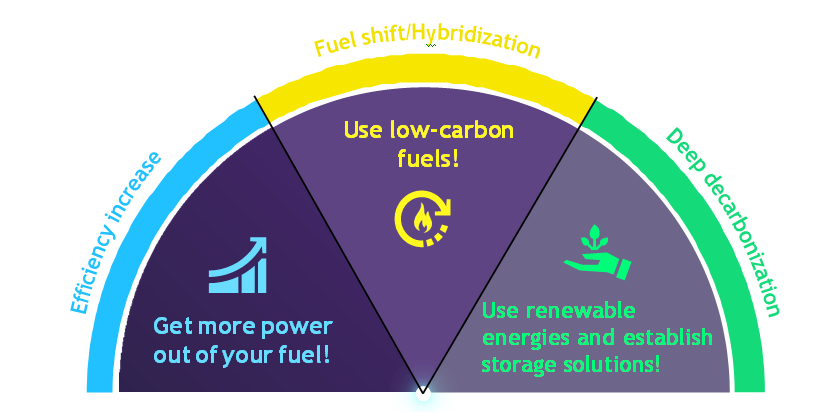BS7302 Managing CSR And Sustainable Development Assignment Sample
Module Code And Title : BS7302 Managing CSR And Sustainable Development Assignment Sample
Introduction
The industry is an inevitable part of civilization to reach the modern niche lifestyle with easy and fast accessibility of goods and products through consumerism and rapid customization of products and services. It needs to be mentioned that industrial operation is the root cause of growing pollution and instability in the environment and seemingly causes concerns for the business fraternity and global leaders to worry and take effective steps for sustainable development.
The approach from the world leaders is for ensuring resource-rich earth for the future generation to thrive and flourish together with Sustainable climate change and green practices to survive for the long run. This report will carry away the details of the emergence of industrial operation and its impact on air pollution with the contemporary business initiatives and ethics to address the issue for sustainable business practice.
Evaluating the causes of air pollution and the contribution of industrial operation
There are multiple causes are associated with air pollution which is a complex interaction of dust particles and toxic pollutants with dispersion and emission from the transportation vehicle and manufactories. Industrial operation, fossil fuel, vehicle emissions and agro-waste are the prime aspect of air pollution where industrial emissions in all forms with Green House Gas (GHG), Toxic chemicals are growing day by day with unlimited human desire.
The greed is also now pushing the industry leader to become accustomed to sustainable and green economy evolution toward sustainable development and extensive exploration of opportunities for enabling global market access. During the industrial revolution in the early days of the sixteenth-century industrial air pollution has started its journey through various industrial productions of goods for fulfilling different purposes of human living and coordinating professional life.
The contamination of the air is going through the burning of fossil fuel and other natural resources for supplying energy in the industrial operation of manufacturing and other associated work to prepare the finished goods in the market. Industrial processes are accompanying around 8% of global emissions of GHG including electric generation which effectively supplies the source of energy for consistent business production and proper operation (Akey and Appel, 2021).
 Figure1: Sources of air pollution by industrial operation (Source: Akey and Appel, 2021)
Figure1: Sources of air pollution by industrial operation (Source: Akey and Appel, 2021)
The manufacturing of various goods for the market economy through developing products and services for public use has given the opportunity to do business through public acceptance and sustainability practice. The organizational reputation and branding are reflected in consumer attraction and confidence for propelling the revenue generation of the business through market competition and fulfilling the interest of the stakeholder through Corporate Social Responsibility (CSR) activity and business ethics for a sustainable economy to prosper altogether through steps and approach for conserving biodiversity.
The sustainable development approach toward the green economy practice has aimed to reduce the reliability of fossil fuel for energy resources for net-zero carbon emission commitment by exploring the opportunity of renewable energy sources for achieving green sustainability (Yang et al., 2021). Industrial air pollution is now heavily causing issues with frequent environmental shifts with the Acid rain, the intoxication of drinking water as well as several health-related diseases to the population.
It is also disrupting the clean and green environment with an increasing percentage of smoke, gas, smog and other toxic chemicals which directly damages the natural respiratory system of human beings as well as cause allergic reactions and food poisoning to the population.
The use and development of chemical solvents for the dyeing and tanning industry, improper waste management techniques, obsolete technology, and industrial accidents are the major contributors to industrial air pollution. The business leaders designed the CSR activity to communicate the organizational stands on social development and make relations with the community as a responsible part of civilization to minimize the effect of carbon emissions which is influencing global warming (Msosa and Govender, 2019).
The Corporate commitment through CSR, SD and business ethics is eagerly looking to the environment to ensure the sustenance of the population as well as business function for a long time with safe life and market for the future generation minimising the industrial emission of air pollutants (Crippa et al., 2018).
 Figure 2: The emission of air pollutants from industrial emissions over the period (Source: Crippa et al., 2018)
Figure 2: The emission of air pollutants from industrial emissions over the period (Source: Crippa et al., 2018)
The huge growth in technology and innovation for enabling the fast spaced modern civilization has come through the year of industrial operation. It is not adequate or wise to completely shut down the operational activity rather focus on sustainable development for mitigating the causes of climate emergency and strict action to popularise the green practice. Business ethics will allow the organization to follow the standard structure with the regulatory approaches to minimize the emission of air pollutants from the air for delivering a clean and fresh environment.
CSR/SD and business ethics theories respective to industrial pollution
Triple bottom line theory
Triple bottom line theory is an emerging business concept where the organization’s competence is reflected through its commitment and market responsiveness measuring social and environmental impacts and addressing the issues for the society and community. The triple bottom line theory is also called as three P’s where it accommodates the need and requirement for people, planet and profit which allows the organization for a process of regeneration with business transformation for growing for a sustainable future.
It sets an objective, benchmark, target, and goal to improve and evolve toward sustainable practice in the organizational framework and boost the business opportunity through growing measures of environmental-friendly actions and sustainable procurement for engaging in economic progress (Hammer and Pivo, 2017).
The triple bottom line theory helps the business organization to effectively implement the organizational change for managing the business operation with fast-paced technology as well as a global market trend in consumer purchasing behaviour. It strongly focuses on the closure of emissions as per the pledge of a net-zero carbon footprints in the air with the sustainable practice for the revival of the economy and business through CSR with ensuring sustainable climate change (Masud et al., 2019).
Normative theory
The normative theory is the ethical practice that focuses on the decision-making practice of the organization on behalf of minimizing the industrial emission and use of renewable energy dour for consistent business operation. This theory defines the dependency upon the moral standard for differencing the right and wrong inside the organizational environment for delivering the business approach toward the environment, society and market.
It fulfils the long-standing dues for equalizing the environmental progress through involvement in green and ethical practices to deliver less carbon to the environment. The ethical ground is influencing the business leaders to take an effective step in organizational perspective to eventually help the sustenance of the environment through the moral ground to survive for a long-lasting period which will ensure the competent future world to the citizen.
However, effective innovation and initiatives are helping to combat air pollution aggressively with the individual factors and situational factors and degree of impact to make a sustainable approach towards the organization, society and future through ethics and moral call (Setiawan et al., 2020)
 Figure 3: Normative theory balancing between situational and individual factors (Source: Setiawan et al., 2020)
Figure 3: Normative theory balancing between situational and individual factors (Source: Setiawan et al., 2020)
Stakeholder theory
Stakeholder theory is the concept of interconnected relationships with the customer, partner, vendor, suppliers, employees, investors, and shareholders which is developed for implementing agility and mobility in the business process. The close interactivity is crucial for enabling the strategic plans to coordinate the standard life being eyeing for sustainable climate change and long term business stability.
The protection of human rights for the employee as well as the partnership is focusing on sustainability through incorporating the business integration and real-time acknowledgement and sharing of a current position of product across the global value chain (Clarke and Boersma, 2017). The use of ethical contracts and green procurement practices for delivering the green economy to the population is coordinating with business correspondence and ownership responsibility of the leadership to minimise the impact of the air pollutants on the environment.
Analyzing the corporate and other initiatives launched to combat industrial air pollution
In the modern era, air pollution is one of the main environmental issues as it has been observed that in most cases air pollution is mainly responsible for global warming and other environmental issues. Moreover, the industrial sector of a country plays a central role in accessing the amount of Co2 emission in the atmosphere for the reason air pollution is increasing day by day. It is the duty of every industry in a country to implement effective initiatives in order to reduce the emission of Co2 which will be useful in dealing with industrial air pollution.
The industries of Europe have taken multiple actions in order to reduce the emission of toxic gas from the atmosphere and it has been observed that in recent years the entire emission of SOx (sulphur oxides) has been reduced by 54% in Europe which indicates that these initiatives of European industry are extremely effective (Europa.eu. 2022). In addition to that, it will be beneficial if the manager of modern industries will be able to reduce the use of conventional energy and increase the use of solar energy which has a positive impact on reducing air pollution.
One of the main benefits of solar energy was that it reduces the emission of greenhouse gasses in the atmosphere while if every industry of a country will use solar energy then the emission of those toxic gasses will be significantly declined.
The government of China has launched an air pollution control policy in order to reduce the emission of harmful gasses from the industries of a country which may be treated as an innovative initiative to reduce the harmful impact of environmental pollution. The basic feature of air pollution is that it reduces the quality of and for that reason the Chinese government has used the AQI indicator system which has refined the air quality of Beijing by 55.74% (Yuan and Yang, 2019).
Along with that, if the government of every country will monitor the quality of air by AQI and provide proper guidance to maintain a high quality of air in local areas then these issues may be solved. Many manufacturing industries of the world are using Catalytic oxidizers which are extremely impactful in destroying the air pollutants with the help of high heat and chemical catalysts and after that less harmful gasses were released.
The Internet of Things (IoT) plays a central role in reducing industrial air pollution as many organizations around the world have implemented IoT and launched Air pollution tracking gadgets such as IoT-Mobair (Dhingra et al., 2019). Additionally, some firms have taken decarbonisation and zero greenhouse emission initiatives in order to reduce greenhouse gas emissions which directly improves air quality.
It is one of the prime duties of the industries to select non toxic materials for manufacturing products as toxic review material releases more Co2 and CO in comparison to non toxic materials. The use of Regenerative thermal oxidizers (RTOs) is also increasing day by day in manufacturing industries and the main benefit of using this technology is that it is really useful in destroying the air pollutants with the help of industrial waste heat.
In addition to that, it is also difficult to handle this innovative technology, however many industries have recruited skilful labours who play an essential role in handling the technologies in an effective manner. The successful implementation of air-purifying tours is also helpful in reducing the air pollutants in the local atmosphere and for that reason the government of China has installed a 100 meter air-purifying tour which is extremely suitable for removing the pollutant for the lovely atmosphere (Quarmby et al., 2019).
It is recommended that if the manufacturing industries of the country also installed many air-purifying towers then it may play a central function in filtering the air. Automobile industries have developed a sustainable vehicle manufacturing system by following the SDG goals which are also influential in reducing the Co2 emissions from the environment that directly reduce the industrial air pollution.
Application of initiatives in the real market scenario
In this portion, real life companies’ examples will be provided that have taken many short and long term initiatives in order to reduce the number of air pollutants which has improved the quality of air successfully. Additionally, as an example, it needs to be pointed out that the management of McKinsey is extremely focused on reducing air pollution and for that reason the company has taken many environmental footprints.
Furthermore, in 2018, the company was able to establish 100% carbon neutral projects which were useful in reducing Greenhouse gas emissions (Mckinsey.com. 2022). Apart from that, in 2018 the net carbon emission of the colony was 0 which indicates that the Green initiatives of the company were extremely successful (Mckinsey.com. 2022).
From the beginning of McKinsey, the company has planned to use renewable energy and according to the sustainability report of the company, in 2018 the company has used 87% renewable energy in its projects which is impactful in reducing GHG emissions from the local environment (Mckinsey.com. 2022). The management of Mckinsey also has built a green team and one of the main aims of the green team is to implement innovative initiatives in order to reduce carbon footprint and establish environmental sustainability.
The management of Xerox has launched solid ink technology which is immensely innovative and impactful in order to reduce the carbon footprint and GHG emissions from the atmosphere (Albertini, 2019). On a specific note, many organizations of the world have followed SDG goals such as goal number 13 which is mainly designed to implement required and urgent action in order to deal with climate change and this goal also projects to reach net zero Co2 emission level by 2050 (Unstats.un.org. 2022).
Siemens Energy also focuses on decarbonisation techniques and the implementation of innovative technologies which are really effective in reducing the net carbon emissions of the company. One of the main motives and approaches of Siemens Energy is to provide green energy to customers and recently the company has developed a new solar power system and power to x solution which fulfils the strategies goals of the company (Siemens-energy.com. 2022).
In recent years, the manager of the company has invested a lot in the research and development of the company which has helped the company in establishing the decarbonisation process. Analyzing the website of Siemens Energy, it has found that the main mission of the company is to provide green energy to all customers with the help of innovative technology.
 Figure 4: Decarbonisation model of Siemens Energy (Source: Siemens-energy.com. 2022)
Figure 4: Decarbonisation model of Siemens Energy (Source: Siemens-energy.com. 2022)
Siemens Energy recently has developed an environment friendly power supply system for cruise ships that is more environments friendly and does not produce a high amount of Co2 in the environment. In other responses, one of the prime features of the power supply systems is that the transformation station of the system avoids Co2 which is extremely useful in reducing the harmful emission of GHG emissions from the atmosphere.
On a broader note, the management of Siemens Energy has used multiple innovative technologies such as power electronics, Artificial Intelligence (AI), Data Analytics and many other technologies which support and influence the sustainable strategy of the company. The use of conventional technology may not help the company to fulfil the sustainable goals and it may run the climate neutral perspective of the company.
In order to achieve sustainable goals, the company has used 78% of green electricity in the production houses which decarbonizes the entire manufacturing process of the organization. Apart from that, there are several counties that are trying to establish a decarbonised society, as a result, the prime minister of Japan has taken the initiative to establish carbon free society by 2050.
Conclusion
From the above discussion, it has been concluded that industrial air pollution is toxic to human civilization and is causing a number of deaths as well as several diseases to the population which also contributes to the emission of GHG gases. The air pollution is alarmingly disturbing the global bodies as well as the multinational corporation to dedicatedly take steps and action in lieu to mitigate the environmental damages and reverse the pollution-free environment with green and ethical practices to thrive all together to make progress to achieve a sustainable future.
Recommendation
The recommendations for the reduction of industrial air pollution are as follows:-
- The organization should have implemented the organizational change through circular economy practice with renewable energy resources as the supply of energy
- The organization may adopt pollutant distillation technology avoiding the direct emission of industrial pollutants into the air rather emit those gas after purifying through distillation (Li et al., 2018)
- It should be recommended that the modern organization needs to follow the SDG goals which may help the company to establish an appropriate framework to reduce industrial air pollution
- It is the prime responsibility of the modern companies to use renewable energy such as solar power, hydro power which will be helpful in reducing air pollution from the atmosphere
- It has been observed that the companies of developed and developing countries are using wet scrubbers and various innovative technologies in order to reduce harmful air pollutants
- The automobile companies need to produce e-vehicle which is comparatively more environment friendly rather than gasoline powered cars
- It should be recommended that the manufacturing companies are required to use non toxic air environment friendly material in order to reduce the industrial air pollution
- The installation of air parting towers and updater air filtration systems will be also influential in improving the quality of air which directly impacts reducing the air pollution rate in a country Industrial air pollution is immensely harmful and if the modern organization will not be able to take proper action when it will be extremely difficult to reduce the air pollution from the local atmosphere. In addition to that, the government of every country needs to follow a net zero carbon emission model to deal with these issues.
References
Akey, P. and Appel, I., 2021. The limits of limited liability: Evidence from industrial pollution. The Journal of Finance, 76(1), pp.5-55.
Albertini, E., 2019. The contribution of management control systems to environmental capabilities. Journal of Business Ethics, 159(4), pp.1163-1180.
Clarke, T. and Boersma, M., 2017. The governance of global value chains: Unresolved human rights, environmental and ethical dilemmas in the apple supply chain. Journal of business ethics, 143(1), pp.111-131.
Crippa, M., Guizzardi, D., Muntean, M., Schaaf, E., Dentener, F., Van Aardenne, J.A., Monni, S., Doering, U., Olivier, J.G., Pagliari, V. and Janssens-Maenhout, G., 2018. Gridded emissions of air pollutants for the period 1970–2012 within EDGAR v4. 3.2. Earth Syst. Sci. Data, 10(4), pp.1987-2013.
Dhingra, S., Madda, R.B., Gandomi, A.H., Patan, R. and Daneshmand, M., 2019. Internet of Things mobile–air pollution monitoring system (IoT-Mobair). IEEE Internet of Things Journal, 6(3), pp.5577-5584.
Europa.eu. 2022. [online] Available at: <https://www.eea.europa.eu/signals/signals-2020/articles/the-challenge-of-reducing-industrial-pollution> [Accessed 8 April 2022].
Hammer, J. and Pivo, G., 2017. The triple bottom line and sustainable economic development theory and practice. Economic Development Quarterly, 31(1), pp.25-36.
Li, F., Huang, J., Xia, Q., Lou, M., Yang, B., Tian, Q. and Liu, Y., 2018. Direct contact membrane distillation for the treatment of industrial dyeing wastewater and characteristic pollutants. Separation and Purification Technology, 195, pp.83-91.
Masud, M., Kaium, A., Rashid, M., Ur, H., Khan, T., Bae, S.M. and Kim, J.D., 2019. Organizational strategy and corporate social responsibility: The mediating effect of triple bottom line. International journal of environmental research and public health, 16(22), p.4559.
Mckinsey.com. 2022. [online] Available at: <https://www.mckinsey.com/about-us/social-responsibility/2018-report> [Accessed 8 April 2022].
Msosa, S.K. and Govender, J.P., 2019. Environmental impact and CSR responsibilities. In Opportunities and Pitfalls of Corporate Social Responsibility (pp. 151-168). Springer, Cham.
Quarmby, S., Santos, G. and Mathias, M., 2019. Air quality strategies and technologies: A rapid review of the international evidence. Sustainability, 11(10), p.2757.
References
Setiawan, B., Afiff, A.Z. and Heruwasto, I., 2020. Integrating the theory of planned behavior with norm activation in a pro-environmental context. Social Marketing Quarterly, 26(3), pp.244-258.
Siemens-energy.com. 2022. [online] Available at: <https://assets.siemens-energy.com/siemens/assets/api/uuid:ce31f501-4351-4511-8c60-2715119fab88/sustainability-report-2020-siemens-energy.pdf> [Accessed 8 April 2022].
Unstats.un.org. 2022. — SDG Indicators. [online] Unstats.un.org. Available at: <https://unstats.un.org/sdgs/report/2021/goal-13/> [Accessed 8 April 2022].
Yang, X., Wang, J., Cao, J., Ren, S., Ran, Q. and Wu, H., 2021. The spatial spillover effect of urban sprawl and fiscal decentralization on air pollution: evidence from 269 cities in China. Empirical Economics, pp.1-29.
Yuan, G. and Yang, W., 2019. Evaluating China’s air pollution control policy with extended AQI indicator system: Example of the Beijing-Tianjin-Hebei region. Sustainability, 11(3), p.939.
Know more about UniqueSubmission’s other writing services:


I am sorting out relevant information about gate io recently, and I saw your article, and your creative ideas are of great help to me. However, I have doubts about some creative issues, can you answer them for me? I will continue to pay attention to your reply. Thanks.